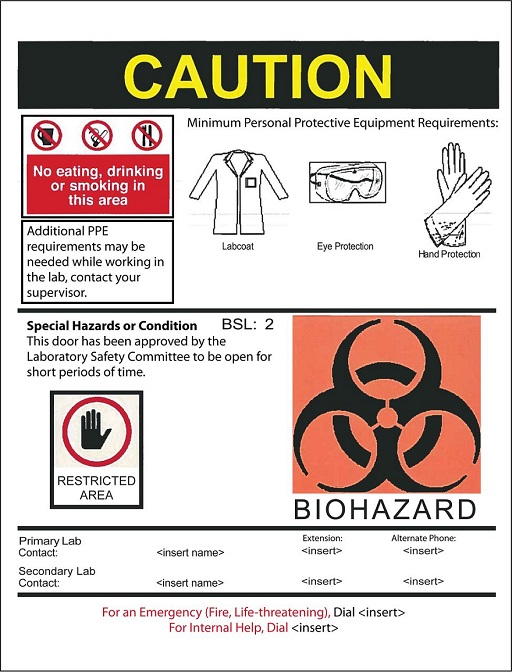2.1 Meeting basic standards: facilities and safety
It is important to ensure that as far as possible the laboratory provides a safe and practical working environment.
The size, construction and location of the laboratory facility should be fit for purpose, with separate areas for different activities to optimise working conditions. Staff should have sufficient space for their work, should not have to deal with multiple distractions whilst processing samples, and should have access to the necessary equipment and commodities. Equipment should be in good working order and maintained and serviced as required by the manufacturer. Staff are entitled to expect a clean, safe and secure environment in which to work.
Safety within the laboratory includes:
- general safety – protection from standard workplace hazards such as trips, falls, fires, etc.
- biosafety – the measures taken to protect personnel and the environment from unintentional exposure to potentially infectious agents or to toxins.
Biosafety measures include:
- staff training
- strict adherence to protocols
- wearing personal protective equipment (PPE) such as gloves, lab coat and mask.
When are biosafety practices undertaken in a microbiology laboratory?
All the time.
Something that is often considered alongside biosafety is
Veterinary laboratories must be especially careful to prevent the release of animal pathogens into the wild. Why is this?
Many pathogens isolated in veterinary laboratories not only pose a threat to animal health but they also have the potential to infect humans (in the form of ‘zoonoses’, diseases which can be transmitted to humans from animals).
To ensure staff and public safety, infection control, risk assessments, cleaning and waste disposal should be covered by specific policies. Staff training and the monitoring of best practice should also be carried out with appraisal and feedback. Laboratory manuals should be regularly updated to reflect current biosafety and biosecurity guidance and standards. For clinical laboratories, guidance is provided by the World Health Organization (WHO, 2004, 2006), and for veterinary laboratories, by the manual of diagnostic tests and vaccines for terrestrial animals (OIE, 2019).
Who is responsible for safety and security within the laboratory?
Whatever their role, everyone should (a) be aware of basic safety rules, and (b) be responsible for behaving in a way that does not put themselves or others in danger in the workplace. Risk assessments and staff safety training are the responsibility of those with managerial roles.
Activity 3: Biosafety and biosecurity measures in place in a clinical microbiology laboratory
Look at Figure 2 below.
Identify the elements in the figure that are related to:
- a safe work environment
- biosafety
- biosecurity.
Answer
A safe work environment
- A clear warning sign of caution
- Lab contact phone numbers
- Emergency phone numbers
- A Lab Safety Committee is active in this institution
Biosafety
- A biohazard sign
- A sign instructing no eating, drinking or smoking
- An indication of the biosafety level (BSL2)
- PPE requirement
Biosecurity
- A biohazard sign
- A signpost for a restricted area
2 Ensuring quality in the laboratory




